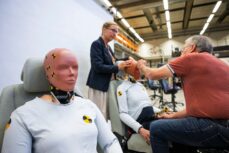US authorities are defining safety standards for the self-driving vehicles of tomorrow

At the forefront of advances when it comes to self-driving vehicles, the United States has finally submitted national safety standards, valid throughout the US territory, for future fully autonomous, driverless vehicles.
These new regulations define the safety requirements for this type of vehicle before they get used on public roads. Of course, this is just the beginning. This document will serve as a basis for developing new safety rules for this new type of vehicle that “does not have traditional manual controls associated with a human driver.” It should be noted that these new standards apply to such vehicles used for transporting people and that vehicles with automated driving systems intended to deliver goods are not concerned by these new standards.
In terms of terminology, the terms “steering wheel,” “driver’s seat” or “passenger seat” will disappear. It also seems that new types of airbags and seat belts will have to be adapted to completely reimagined and redesigned interiors.
Many startups, such as Waymo, Aurora and Argo AI, have been working for years on autonomous driving systems and are already running “robotaxis” in test phase in various states. It is therefore pressing to put into place a bonafide legal framework and standards governing such cases.














